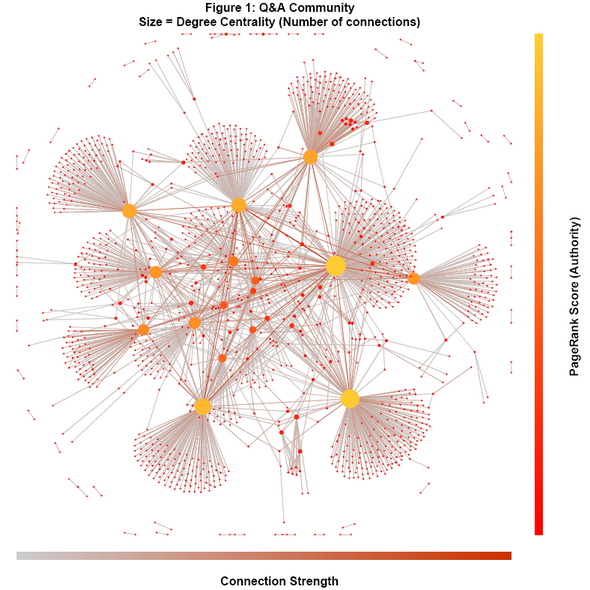In search of: A meaningful measure of Influence
November 3, 2011 2 Comments
***************************************************************************************
I will be phasing this blog out soon. Please visit my new blog at
http://www.brianvellmure.com and subscribe to the new feed there. Thanks!
***************************************************************************************
Influence. It’s a captivating word. It’s an alluring word.
We all want it, and we want to know others who have it.
In high school, if you could get the “cool kids” to the party, the rest would follow.
If the most famous and glamorous people in the world use it, like it, and talk about it, it must be great.
INFLUENCE: THE DEFINITION
But is that influence? From our good friend, Webster, Influence is:
1. A power affecting a person, thing, or course of events, especially one that operates without any direct or apparent effort:
2. Power to sway or affect based on prestige, wealth, ability, or position
WHO, THEN, ARE THE INFLUENCERS?
As part of a thought exercise, I asked myself two questions:
(1) Who are the most influential folks in history?
Names like Jesus, Nelson Mandela, Martin Luther King, Adolf Hitler, FDR, Mohandas Ghandi, Bill Gates, Warren Buffett, and Steve Jobs come to mind.
(2) Who have been the most influential people in my life?
My wife, my parents, a former NBC Universal Executive, a business man turned global missionary, the most successful enterprise sales executive I know, a Navy Seal turned pastor and non-profit Executive Director, and select football and basketball coaches throughout my athletic career.
The irony is that many or most of the most influential people in my life literally have no or limited presence on Social Networks (yet). There are dozens of others who influence my thinking as circles cascade outwards, and as contexts become more detailed and narrowly defined, but these are the ones who have spoken into my life, and who have the most influence on my decisions. Their actions and influence on my behavior is for all intents and purposes, not measurable.
THE “INFLUENCE” OF NETWORKS ON THE SOCIAL CUSTOMER
But I am also a social customer. I read reviews. I ask, comment, and interact in public social networks and forums, and these interactions and the things I learn and observe do influence my buying decisions.
WOMMA put together the following infographic about what fuels our collective purchasing decisions. These are the things that have marketers so excited and quite frankly, confused.
LEVERAGE AND THE DEMOCRATIZATION OF INFLUENCE
As the restricted and proprietary ivory towers of media, global communication, and information flow have given way to citizen journalists, we have witnessed the great democratization of media, celebrity status, and, in turn, the democratization of influence itself. Or have we? Has anything really changed?
In the end, business is all about leverage. It’s about maximizing the return on available time, talents, and resources. The social web, ubiquitous connectedness, and the ongoing digitization of everything finds marketers both forced and opportunistically looking to leverage the new influencers (their reach, their networks, and the trust that they’ve established in their tribe) for their respective interests.
Watch this short clip from a fascinating talk by Deb Roy and you’ll see a fantastic example of how an action by one can truly effect the actions of tens, or hundreds, or potentially thousands of others.
So, then, as marketers, the next obvious questions are:
How do we find the influencers?
How do we engage with them?
How do we entice them?
And, ultimately, how do we provide these influencers with a message that they can carry to their audience(s) that benefit our brand, our company, our products, and ultimately our interests?
FINDING THE INFLUENCERS
Who do we reach out to?
This first question is where most people start. Who are the influencers in our marketplace? The answer to that question, in and of itself, may be tougher than it initially seems. The unaware may start with their offline network, and extend their research by finding those with the highest number of Twitter followers. But studies have shown that there is little correlation to numbers of Twitter followers, facebook fans, or similar social network as measures of real influence.
For more reading on this, check out On Twitter, Followers Don’t Equal Influence and Celebrities’ Twitter Followers Have Zero Influence
Some online services have begun to tackle this problem by attempting to measure influence in a more scientific way. By now, you may have undoubtedly heard of Klout, or PeerIndex, or Traackr, or several other upstart influence measurement tools.
- Are these valid?
- Should they be used? And if so, how?
- Does it help me identify the influencers who can allow me the greatest amount of leverage for distributing my message, and more importantly, help make a measurable impact for my organization?
THE EMERGENCE OF INFLUENCE MEASUREMENT SCORES
Klout, the most widely recognized service, recently stirred a sea of controversy when they changed their algorithm score. Perusing through the comments, it was apparent that some had so deeply embraced these influence scores, that they were literally upset that they might lose their jobs, their clients, and for a moment, I was concerned that many of them might even lose their lives.
While Klout’s messaging spun this as a “More Accurate, Transparent Klout Score”, I have to wonder. They’ve never been very transparent about the mechanics of what makes up the Klout score. While Klout started with Twitter, it has since expanded to Facebook, Google Plus, LinkedIn, and a host of other social sharing sites. At first glance, it appears that facebook, in particular, has taken on a far more significant weighting in their recent shift.
When trying to understand the motivations behind actions, I often start with the looking at the money trail. It’s important to know that Klout is a for-profit corporation with venture capital funding. It’s also important to know that they are monetizing their service by providing social data to large consumer brands. Alignment with the world’s most popular and mainstream social network probably makes sense and may contain the most valuable unstructured data for what has emerged as Klout’s primary paying customers, the world’s largest consumer brands. To their credit. it seems that Klout has perhaps taken a big step towards alignment with their customers in providing relevance. Perhaps I’ll no longer be the ideal candidate for pre-screening and behind the scenes previews for new release movies and TV shows, which I’ve received numerous Klout Perk offers for, ignoring all of them.
Watch this editorial video from the Wall St. Journal as it gives deeper insight into Klout and its effect on many participating in digital media today.
THE STATE OF INFLUENCE MEASUREMENT
Is this really a measure of influence, and if so, in what context, for whom? Or is this simply a service that major brands can leverage to gain access to more targeted recipients of their ads?
How does this concept of influence measurement apply to the billions who choose to make significant changes in their communities, in their businesses, with their customers, and behind the walls of their organizations without doing so on public social networks? How will Klout or something like it really measure actions and communications that truly inspire change and affect thoughts, behaviors, and actions of others?
There is a long way to go. These fledgling measurement scores are valid experiments and I firmly believe the precursors to something more meaningful, more relevant, and more useful, but there is only so much they can measure today. Couple that with the extreme potential and propensity for inaccuracy and fraud, and the system’s reliability breaks down.
Ironically, Klout specifically has suffered quite the backlash on social channels. Recent alarms have sounded over privacy concerns and the inability to remove one’s self from Klout. (Though you can do that now.)
In closing, there are several challenges that the world of influence measurement must overcome before being truly valuable for organizations and brands. I’ll start with a few and let others weigh in.
(1) Klout (and other measurement tools) will act in their best interest. As long as their interests are aligned with profit, their is opportunity for corruption. Witness recent allegations against the major ratings agencies in the wake of the 2008 financial crisis for an example. (To be clear, I have no problem with Klout specifically, nor is this in any way any allegation against them)
(2) As evidenced by the video above, online personalities will act to game their score, something that has been proven to be easy to do. High “Influence” scores then have the potential to be allocated to those who have the most time on their hands to play an online game, then actually make any meaningful change or impact on the world.
(3) True influence is about changing behavior. It’s hard to measure anything truly meaningful today and correlate to something measurable (ie. a purchase, a referral or mention that led to multiple purchases)
(4) Measurement scores must be relevant to the motivations and priorities of the ones utilizing the scores.
(5) *** Perhaps the biggest one that will only be resolved with time and the eventual “digitization of everything”:
Only a small percentage of most of our actions happen in the digital world today. Though, this is changing rapidly , digital influence measurement systems can only evaluate a very small percentage of what’s happening in the real world.
THE REST IS UP TO YOU
I’m sure I’ve missed a ton so I’ll leave the rest to you.
What are some other challenges / gaps you see in today’s “influence measurement” scores? How would you improve them?
Or, maybe you can surprise me, what are some ways that you have used one of the emerging influence measurement systems to measurably impact the bottom line of your organization?
And if you still want more on the topic of influence, my friend Dr. Michael Wu has written quite a bit on the subject, especially as it pertains to social networks.















Recent Comments